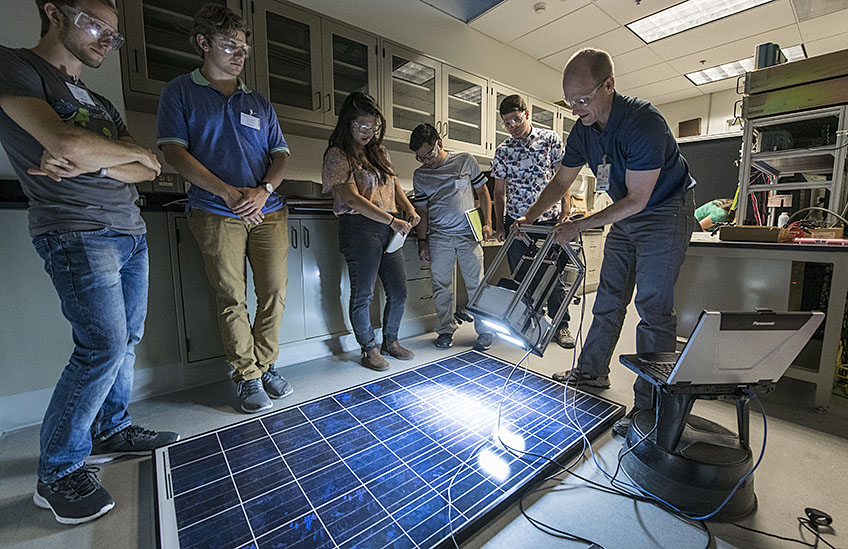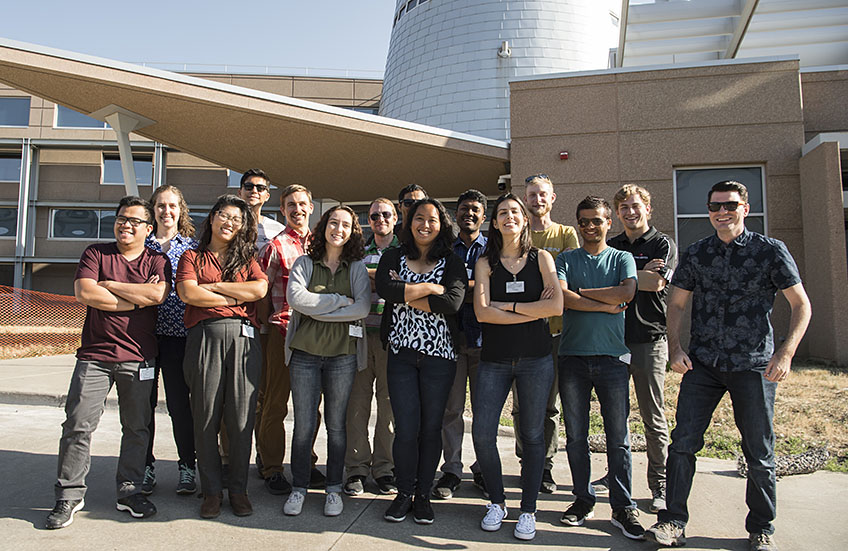For PhD Students, HOPE Workshop Highlights Real-World Applications of Solar Technology
Earlier this summer, 15 graduate students gained invaluable experience through the Hands-on PV Experience (HOPE) workshop. The workshop provided the students with an opportunity to learn from top scientists at the U.S Department of Energy's National Renewable Energy Laboratory (NREL). This year’s HOPE workshop ran from July 9-13.

Starting in 2012, HOPE has brought graduate students from across the United States to NREL each year to increase their knowledge about photovoltaics (PV) and see practical applications of PV technologies. In addition to interacting with over 30 NREL researchers and scientists, a new portion of this year’s workshop included “pitch” practices in which the students presented startup companies they would hope to create. The pitches allowed participants to think about PV outside of just an academic or laboratory setting. Beyond the entrepreneurial aspect students also gained insights into:
- Construction of solar cells and modules
- Fundamentals of silicon, III-V, and hybrid perovskite photovoltaic technologies
- Advanced measurement and characterization techniques for PV materials, cells, and modules
- PV myths and realities
- Group competitions to correctly answer questions about PV history and related science
- Ways PV research fits into the big picture of the rapidly growing industry and technology development.
This year’s workshop saw a noticeable difference in research groups and demographics of participants, with 33 percent of participants being female and 53 percent from underrepresented minorities.
“We ended up with a broader range of research backgrounds from the participants this year,” said Adele Tamboli, a scientist with the National Center of Photovoltaics at NREL.
Students who participated in the program took multiple lessons back to their campus. Eve Mozur, a solid-state chemist studying at Colorado State University, said she enjoyed the opportunity to expand her network and think about the big picture when it comes to PV. “The workshop was very eye-opening and has allowed me to gain a different perspective from the different research areas,” she said.
One lesson Tamboli hopes students walk away with is to be more rigorous with their research, including understanding the fundamentals and limitations of various characterization techniques. “The goal of HOPE is to learn foundational PV knowledge ranging from synthesis and characterization details all the way to practical applications of PV. We hope the students take back the lessons they learned here at NREL and apply them to their research, continue to collaborate, and think about the big picture when it comes to future of PV.”
Students from the following universities participated in the HOPE workshop this year:
- University of California, Merced
- University of Southern California
- University of Tulsa
- University of Louisville
- Iowa State University
- University of Oregon
- University of Utah
- Colorado State University
- Arizona State University
- Ohio University
- Case Western Reserve University
- University of Central Florida
- Arizona State University

Participants in the 2018 HOPE workshop came to NREL from 13 universities across the United States and represented one of the most diverse groups to attend the workshop.
This article has been updated to reflect an editorial change made after its original publication.
Last Updated May 28, 2025
